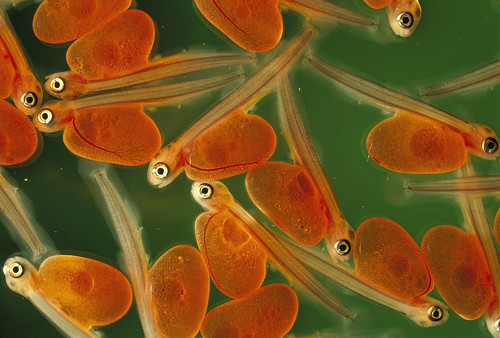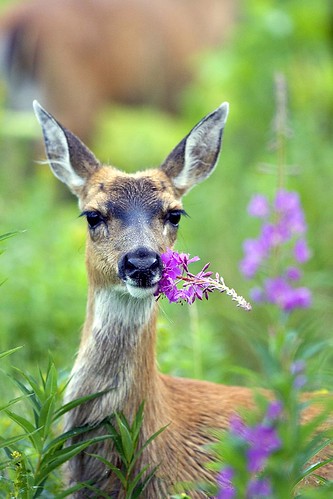
What do wild Alaskan salmon and Sitka black-tailed deer have in common? Other than playing starring roles on many Alaskans’ favorite dinner menus, they also both thrive in forests with large open canopies of hardwood and conifers with thick plant undergrowth. Such characteristics exist in mature forests but not in clear-cut areas.
Historically rich in fish and wildlife species, the Starrigavan Creek watershed in Sitka, Alaska, was clear-cut about 40 years ago by the state of Alaska for timber production, impacting fish and wildlife habitat in this popular local recreation area.
In 2008, USDA’s Natural Resources Conservation Service (NRCS) partnered with the U.S. Forest Service, the State of Alaska Department of Natural Resources, Trout Unlimited and the Sitka Conservation Society to rehabilitate the Starrigavan Creek watershed. The goal was to improve habitat for salmon and deer, two keystone species for many watersheds in southeast Alaska that are also important for subsistence and recreation. Secondary goals were to increase berry production and provide firewood for the local community.

While the Forest Service spearheaded in-stream work on their property, NRCS worked with Trout Unlimited on the adjacent land. We cut excess conifer trees, leaving hardwoods in place to mimic an old growth forest. The hardwoods provide canopy and leaf litter, an important nutrient input to streams and forest soils. To facilitate decomposition of the cut trees, make travel easier for wildlife and allow additional light to reach the understory, we lopped the cut trees into small pieces. Along the roadsides, community members collected the cut trees for firewood.
Monitoring the success of the project continues, as there are both short and long-term benefits of forest conservation. The trees left uncut during the project work will grow faster now that they have better access to light, water and nutrients. So far, the newly opened forest floor is thriving with favored deer browse such as bunchberry dogwood and five-leaf bramble; salmon habitat has improved; and the berry picking looks promising.
Check out more conservation stories on the USDA blog.


